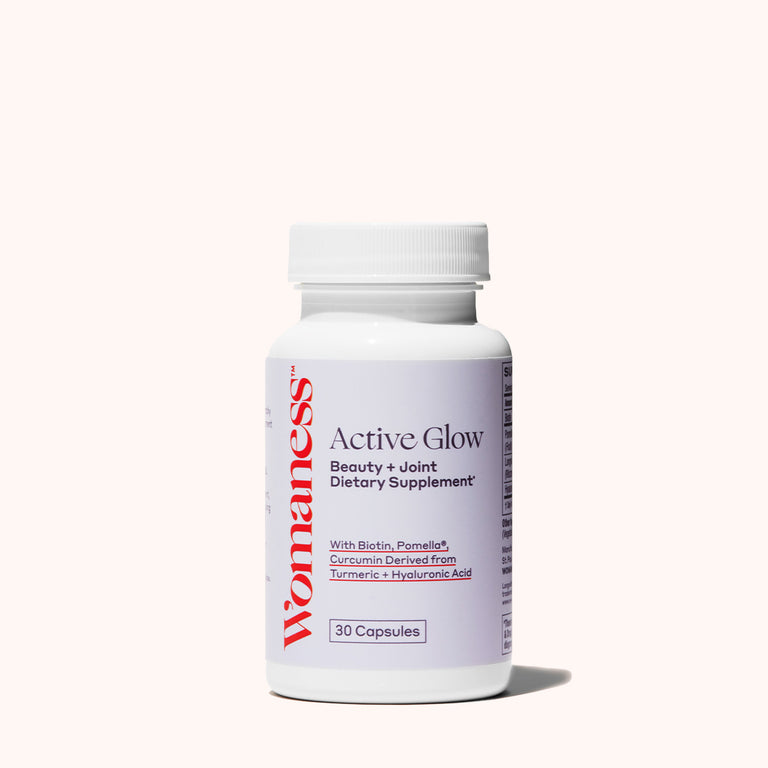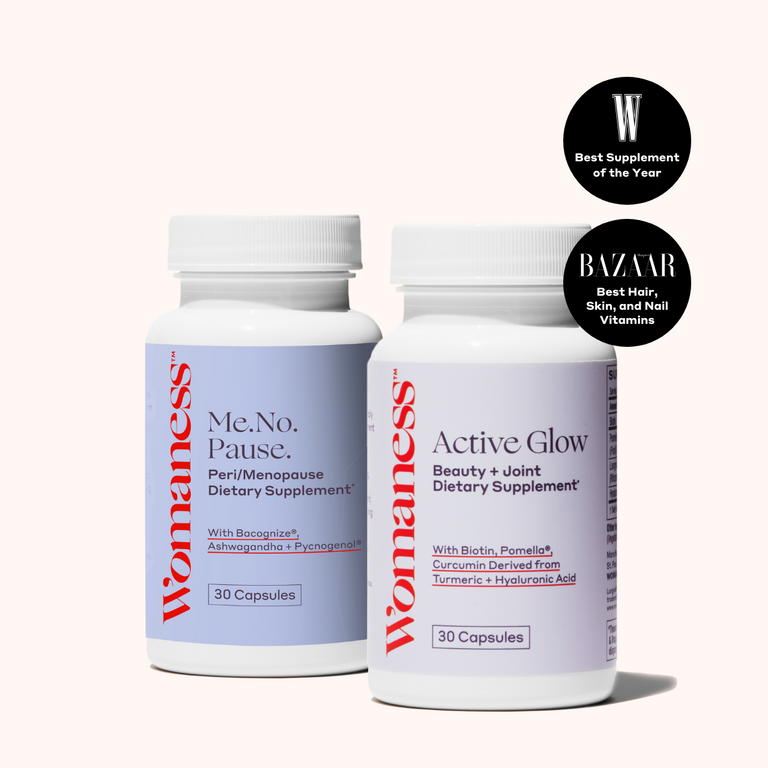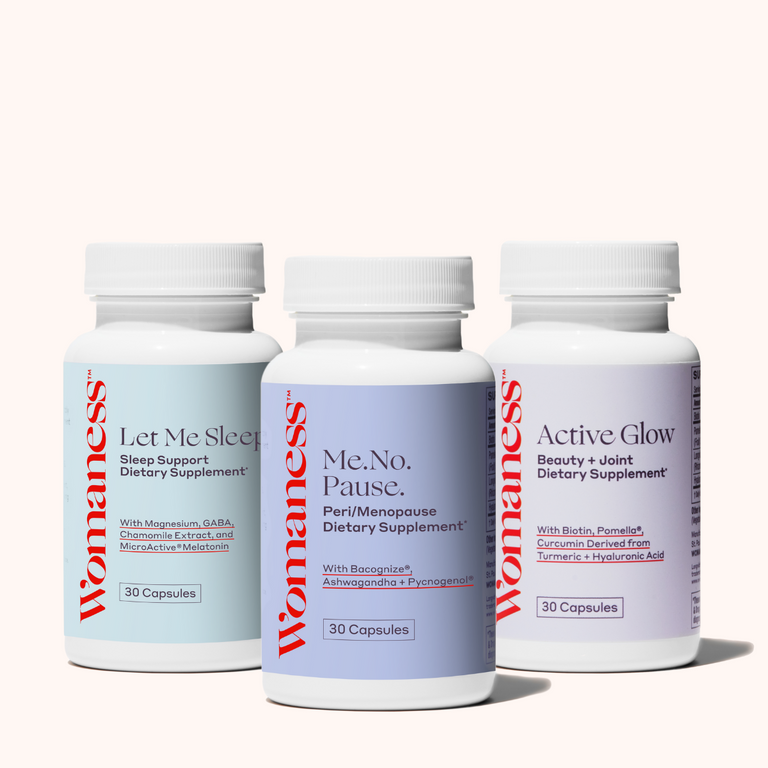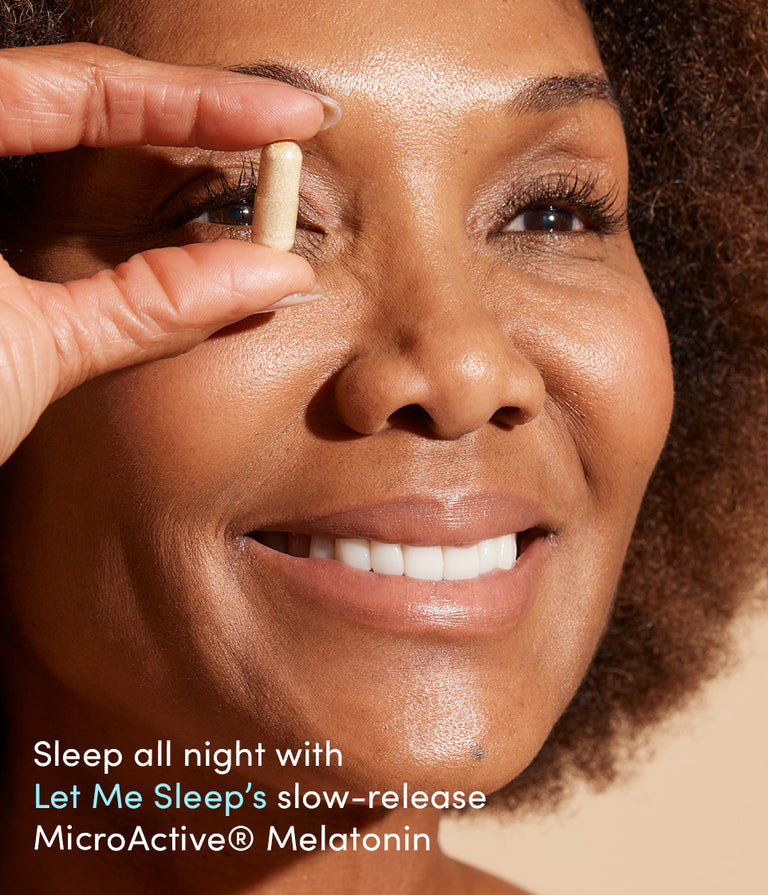By Kim Schlag 4-Minute Read

Kim Schlag is a personal trainer & nutrition coach who helps women over 40 age stronger, improve their body composition, and heal their relationship with food and their bodies through her eight-week course Fitter After 40.
Exercise is one of the key lifestyle interventions you have at your disposal to look, feel, and age your best during the menopause transition and beyond. As a personal trainer who works with women in the over-40 age range, I see three common mistakes being made that impact the results the women are able to achieve with exercise. In this article you will learn not only what those three mistakes are, but what to do instead—so you can build the healthiest, strongest, best version of you yet.
Mistake 1: Skimping on resistance training
As women, we have not been encouraged historically to hit the weights. Instead, we have been led to worship at the altar of whatever exercise can give us the highest number of calories burned or promises the flattest abs. Truthfully, this has always short-changed us...but now our health and longevity depend on us making a more informed choice.
To live long and live well, you will need strong muscles and bones. Standing up from the ground, reaching up to get something from the cupboard, getting up off the toilet—all these daily living tasks you do without thinking now will one day be major obstacles in your day if you have weak bones and muscles.
“Strength training is your secret weapon.”
Unfortunately, you started losing muscle at the age of 30 at a rate of 3 to 8% per decade (unless you’ve been actively progressively strength training). In other not-so-great news: the most rapid bone loss of your life of begins in perimenopause, about a year before your final period and then lasts for approximately three years after that.
None of this is to say your destiny is sealed to be a frail old lady with weak muscles and brittle bones. Strength training is your secret weapon to defeat that fate. Strength train a minimum of two times per week (ideally three to four), focusing on variations of the squat, lunge, hinge, upper body pushes, upper body pulls, and core work.
Mistake 2: Not challenging yourself with the weights
This brings us to mistake two: underloading yourself. Once you make your way to the weight room (or create your own home gym!), it’s important to give your muscles and bones enough resistance to force them to adapt. That adaptation won’t happen in absence of enough stimulus.
Here are a few guidelines to make sure you’re loading yourself enough to get that stimulus:
-
Select a weight you can do for the given rep range AND which leads the last few reps of each set to be HARD. Say you’re doing 3 sets of goblet squats for 8 to 10 reps. At the end of each set, you should feel that you really have to work hard to get those last 2 reps, but you could still get 1 or 2 more reps with good form.
-
You should take (and feel like you need) a rest between sets. Minimum one minute. For your main moves of the day, two minutes is more optimal. If you feel you don’t need the rest, then you’re not using heavy enough weights!
As important as it is to push yourself hard in your workouts, it is equally as important to recover properly from those tough training sessions. This is when the magic of muscle growth happens. Recovery includes rest from exercise, adequate sleep, proper nutrition, and stress management.
"Your workouts should adapt to meet you where you are on any given day."
Mistake 3: Not tailoring your workouts to meet your ever-changing needs
This goes for any person, but in menopause it is especially pertinent: what you have to give today might not be what you have to give tomorrow. Poor sleep due to insomnia or hot flashes, joint aches and pains, breast tenderness, racing heart, vaginal dryness, irritability, mood swings, depression, anxiety, and general low energy can have you feeling like a steaming pile of garbage some days, meh on other days, and perfectly fine on others.
Your workouts should adapt to meet you where you are on any given day. My colleague Amanda Thebe developed a 1 to 10 scale she used during her most symptomatic menopause years to guide her exercise selection. The scale ran from 1 (bone dead tired/depressed) to 10 (full energy/bring it on). Every day, she would rate where she was on the scale and then adjust her workouts accordingly, like this:
1 - 2: Go for a walk even if you don’t feel like you can. Even a short walk can improve your mood.
3 - 4: Light activity such as mobility work, a leisurely bike ride, or an easy swim. Move your body in some way that feels good but isn’t a full-blown workout.
5 - 6: Do a reduced version of your planned workout. This might mean fewer sets, fewer exercises, or less intensity. Focus on your form.
7 - 8: Do your planned workout.
9 - 10: Carpe the Diem out of your workout!
This is a brilliant strategy to keep you moving and challenge you appropriately based on how symptomatic (or not) you are on any given day.
Consider which of these three common mistakes (if any) you’re currently making and then choose one small step you can take to correct it. Perhaps it’s signing up for an orientation of the local gym’s weight room, practicing pushing yourself to lift heavier weights, or beginning to log your menopause symptoms to build awareness of how you might exercise to the best of your abilities on a given day.
If you want more direct help consistently incorporating these forms of exercise into your life (including personalized form feedback), please check out my eight-week course Fitter After 40. It’s a complete system for women over 40 to get in their best shape yet, including nutrition, exercise, and mindset.
More in Health & Wellness
How to Start Exercising
3 Lower Body Exercises for Your Workouts
Food to Eat (and Avoid) to Improve Menopause Symptoms






